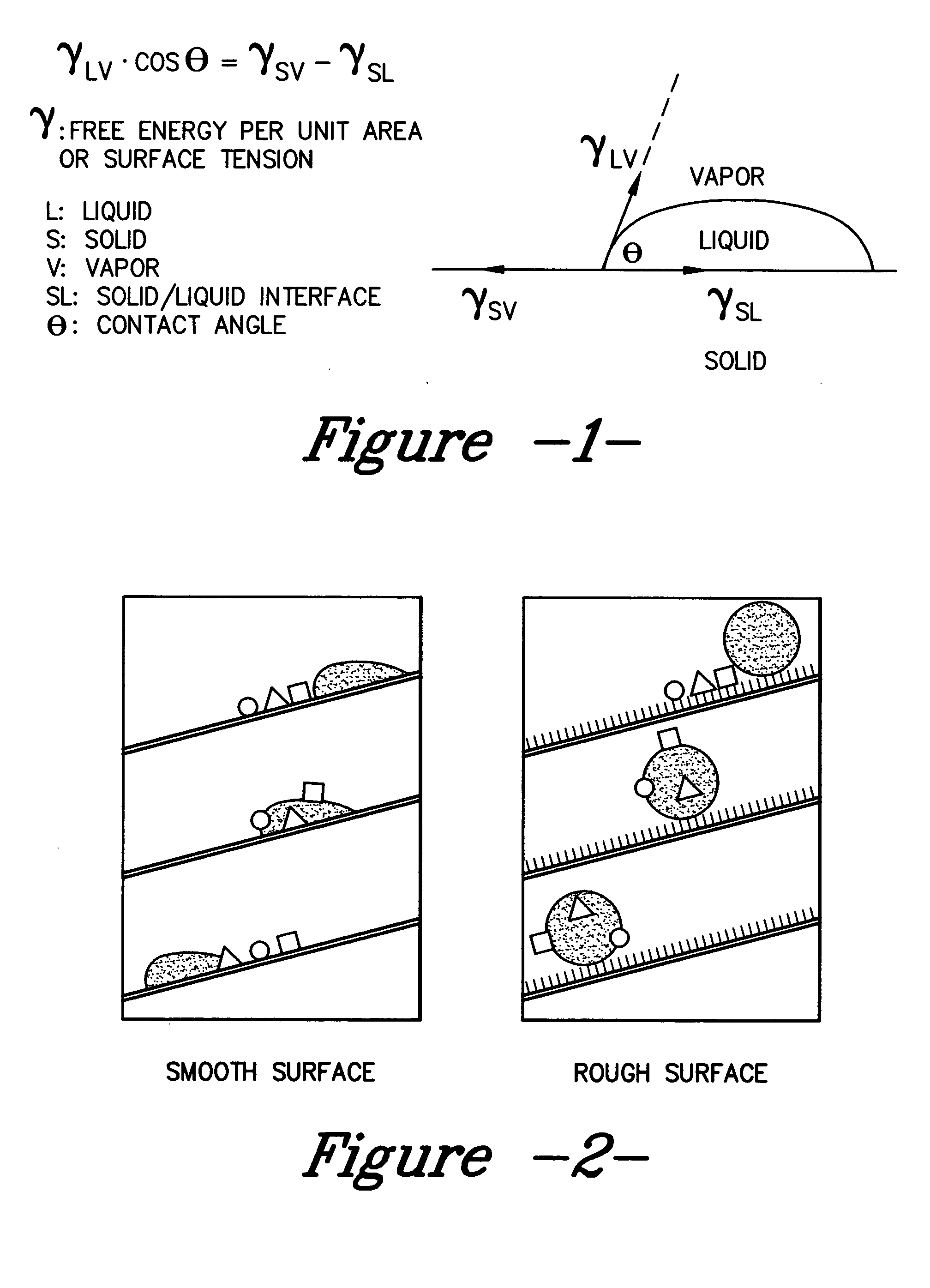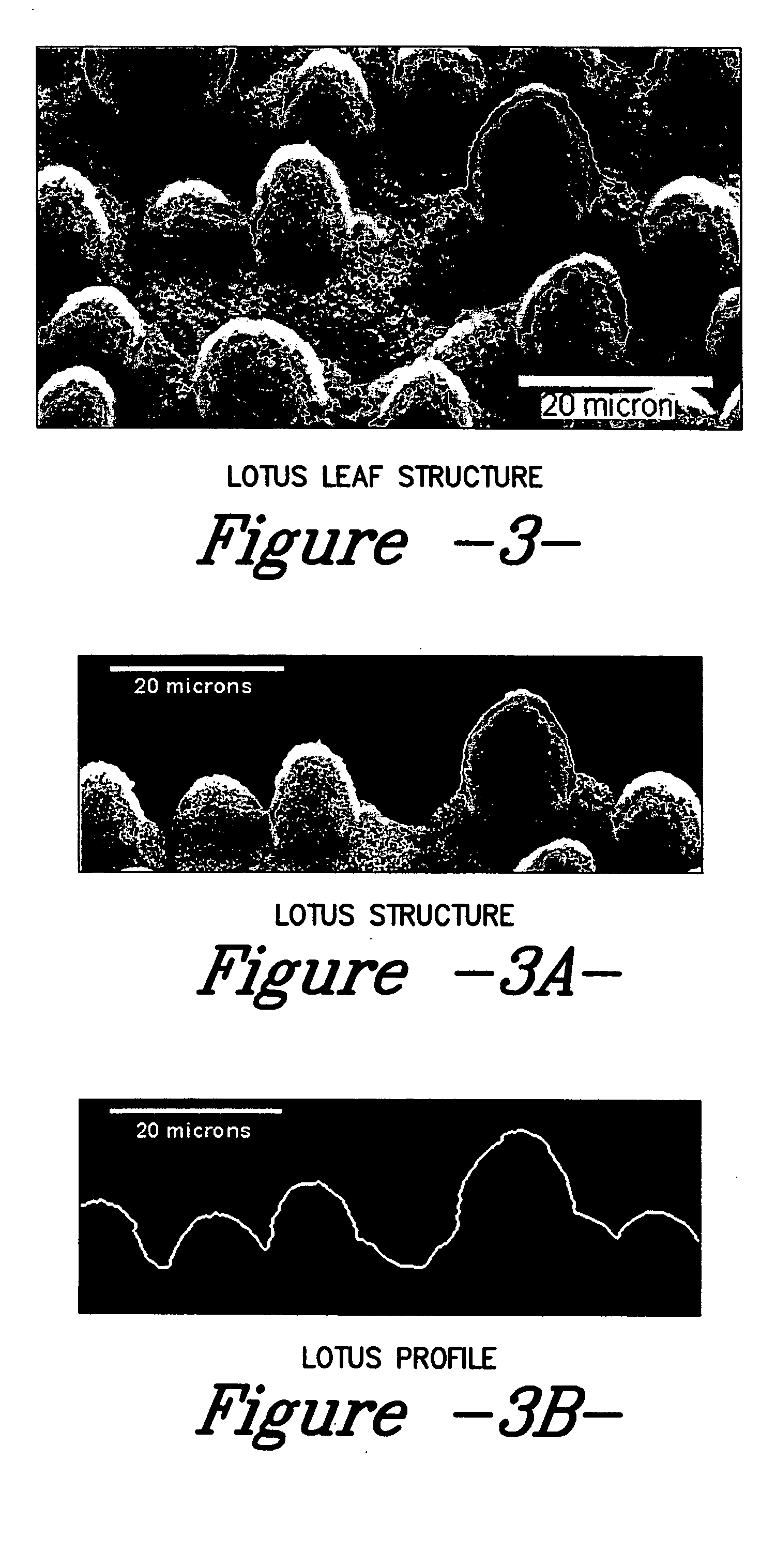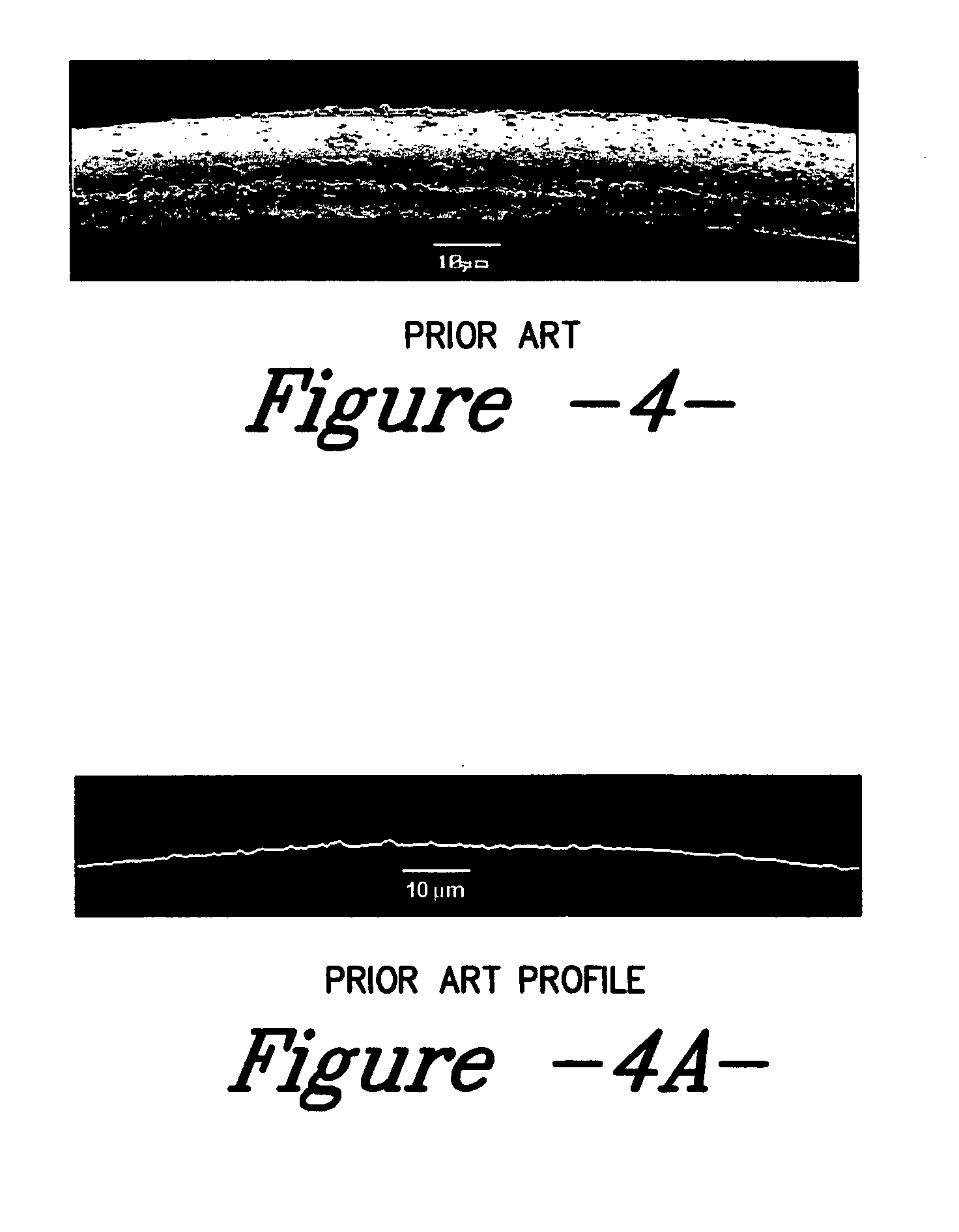Treated textile substrate and method for making a textile substrate
a textile substrate and textile technology, applied in the field of surface chemistry and textiles, can solve the problems of reducing the likelihood of surface air spaces being invaded by water, high contact angle alone is not sufficient, and textile substrates treated according to these references generally do not provide durable repellency, etc., to achieve enhanced durability and prolong the effect of repellency
- Summary
- Abstract
- Description
- Claims
- Application Information
AI Technical Summary
Benefits of technology
Problems solved by technology
Method used
Image
Examples
example 1
Microdenier Twill Fabric Face-Finished One Step Treatment
[0171] A 200 grams bath containing the following chemicals was prepared: [0172] 1. 2 grams (or 1%) of Sipernat 22LS™, hydrophilic silica particles available from Degussa Corporation of Germany. [0173] 2. 8 grams (or 4%) Repearl F-7000, a fluorinated stain repellent agent available from Mitsubishi Corp.; and [0174] 3. 2 grams (or 1%) Milligard MRX™, a cross-linking agent available from Milliken Chemical.
[0175] A 100% microdenier polyester fabric was treated with this chemical composition according to the one step application procedure described previously. The wet pickup of the chemical composition on the fabric was about 50%.
[0176] The microdenier polyester fabric was obtained from Milliken & Company of Spartanburg, S.C. The fabric was comprised of textured filament polyester 1 / 140 / 200 denier warp yarns and textured filament polyester 1 / 150 / 100 denier fill yarns woven together in a 2 by 2 right hand twill pattern having 175...
example 2
Microdenier Twill Fabric Face-Finished Two Step Treatment
[0178] The face-finished polyester microdenier twill fabric as described in Example 1 with the same level of face-finishing was treated in accordance with the two-step application procedure described previously. In the first step of the procedure, 2% of Ludox AM, colloidal silica particles with an average particle diameter of 12 nm available from Grace Davison, was applied to the fabric, and the fabric was subsequently dried. In the second step of the procedure, a mixture of 4.0% Repearl F-7000 and 1% Milligard MRX™ was subsequently applied to the fabric.
[0179] The treated fabric was tested for water and oil repellency, spray rating, dynamic rolling angle by the methods described previously for the as received (“AR”) samples. The results are shown in Table 1A. The spray rating and dynamic rolling angle were tested after 1 home wash, 5 home washes, 10 home washes, and 20 home washes. The test results are shown in Table 1B. Th...
example 4
Automotive Twill Fabric Face-Finished One Step Treatment
[0182] Example 1 was repeated except that the microdenier twill fabric was replaced by an automotive upholstery polyester fabric. The wet pickup of the chemical composition on the fabric was about 98%.
[0183] The automotive upholstery polyester fabric was obtained from Milliken & Company of Spartanburg, S.C. The fabric was comprised of textured filament polyester 2 / 150 / 34 denier warp and fill yarns woven together in a 2 by 2 right hand twill pattern (hereinafter referred to as a “automotive twill fabric” specifically for this invention). The fabric was dyed with a light brown color. The fabric was roughened with a face-finishing process using a diamond coated roll at a level of 1200-30-24. Approximately 20% of the surface areas were roughened by the face-finishing process.
[0184] The treated fabric was tested for water and oil repellency, spray rating, dynamic rolling angle by the methods described previously for as received (...
PUM
| Property | Measurement | Unit |
|---|---|---|
| size | aaaaa | aaaaa |
| particle size | aaaaa | aaaaa |
| particle size | aaaaa | aaaaa |
Abstract
Description
Claims
Application Information
 Login to View More
Login to View More - R&D
- Intellectual Property
- Life Sciences
- Materials
- Tech Scout
- Unparalleled Data Quality
- Higher Quality Content
- 60% Fewer Hallucinations
Browse by: Latest US Patents, China's latest patents, Technical Efficacy Thesaurus, Application Domain, Technology Topic, Popular Technical Reports.
© 2025 PatSnap. All rights reserved.Legal|Privacy policy|Modern Slavery Act Transparency Statement|Sitemap|About US| Contact US: help@patsnap.com



